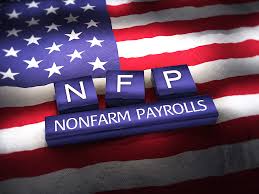Fed Holds in July as Nonfarm Jobs Beat
The U.S. released its June nonfarm payrolls data moments ago. Specifically, nonfarm employment increased by 147,000, significantly exceeding the expected 106,000 gain. Additionally, April and May job

The U.S. released its June nonfarm payrolls data moments ago. Specifically, nonfarm employment increased by 147,000, significantly exceeding the expected 106,000 gain. Additionally, April and May job figures were revised upward by a combined 16,000.
The June unemployment rate fell to 4.1%, beating expectations of 4.3% and May's 4.2%, resuming its downward trend. The drop was mainly driven by employment growth and a slight decrease in job seekers, while the labor force participation rate edged down by 0.1%.
Economists from the Brookings Institution and the American Enterprise Institute noted that due to Trump’s aggressive immigration crackdown, U.S. net migration this year could fall to zero or even turn negative. This means that in the second half of 2025, the U.S. may only need to add 10,000 to 40,000 jobs per month to keep the unemployment rate stable.
For the inflation-wary Federal Reserve, there’s even more good news: Average hourly earnings rose by just 0.2% month-over-month, below expectations of 0.3% and the previous 0.4%. The annualized wage growth rate came in at 3.7%, lower than the market’s 3.8% forecast. Slower wage growth helps ease wage-inflation spiral concerns.
Following the data release, the market priced in a 93% probability that the Fed will not cut rates in July—almost a certainty. Trump's hoped-for rate cuts may now have to wait until September.
The U.S. dollar index spiked, gold fell more than 1%, and U.S. stocks opened higher as the stronger-than-expected data signaled economic resilience.
Bright Nonfarm Report Masks Underlying Risks
However, this seemingly strong jobs report hides troubling signs beneath the surface: A surge in education and healthcare hiring masked weakness elsewhere.
For instance, the federal government continued cutting jobs in June, with 7,000 positions lost—largely due to Elon Musk’s “DOGE” action. All the government job growth came from state and local governments.
In total, government employment rose by 73,000, with the education sector alone contributing 63,000 jobs. Ironically, Trump still wants to eliminate the U.S. Department of Education?
Turning to the private sector: Private businesses added only 74,000 jobs in June, the lowest since October 2023. Trump's erratic tariff policies and uncertainty surrounding the “Beautiful America Act” have led business owners to slow hiring. The healthcare sector accounted for half of private job growth, adding 39,000 positions, including 16,000 in hospitals and 14,000 in nursing and residential care facilities.
Elsewhere, entertainment and hospitality hiring slowed. Wages declined in manufacturing, wholesale trade, and business services.
Analysts Offer Cautious Views
Analysts struck a cautious tone regarding the stagnant labor market turnover. The small unemployment rate drop was mainly due to people leaving the labor force, not because they found jobs.
“U.S. private-sector labor demand is clearly slowing,” said Samuel Tombs, Chief U.S. Economist at Pantheon Macroeconomics. “Tariff hikes, tighter monetary policy, and fears of further trade war escalation are severely impacting labor demand.”
Florian Ielpo, head of macro at Lombard Odier Investment Managers, added: “The strength in education and healthcare hides softness elsewhere. This jobs report is good, but not as spectacular as it first looks.”
Other indicators also point to a cooling labor market. Since early May, continuing jobless claims have surged to their highest since late 2021. The proportion of job seekers who feel confident in finding work has dropped to its lowest since March 2021.
Bloomberg economists Anna Wong and colleagues believe whether the Fed starts cutting rates in September will depend on summer inflation data. Markets, however, have already priced in a September cut.
Disclaimer: The views in this article are from the original Creator and do not represent the views or position of Hawk Insight. The content of the article is for reference, communication and learning only, and does not constitute investment advice. If it involves copyright issues, please contact us for deletion.